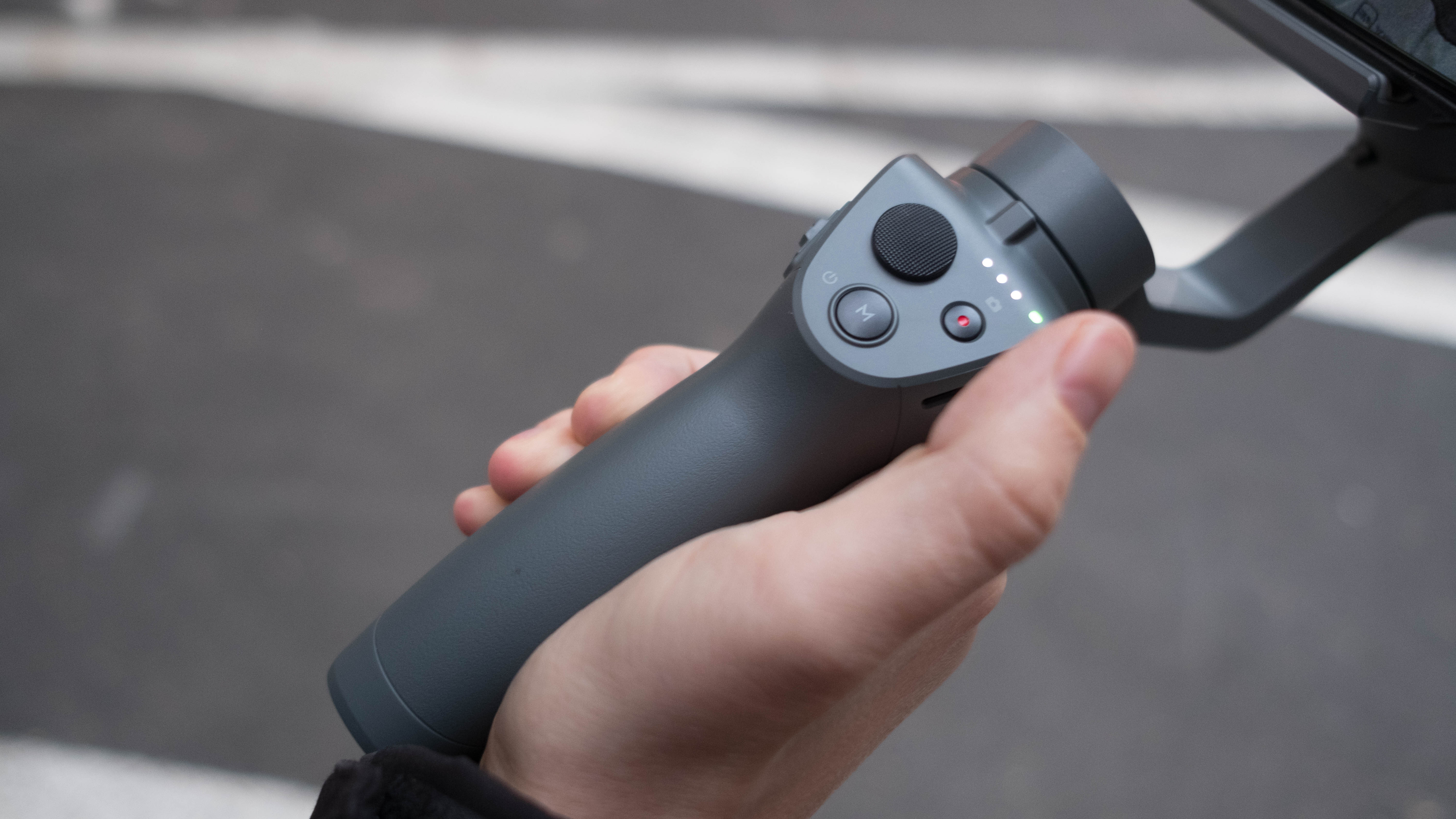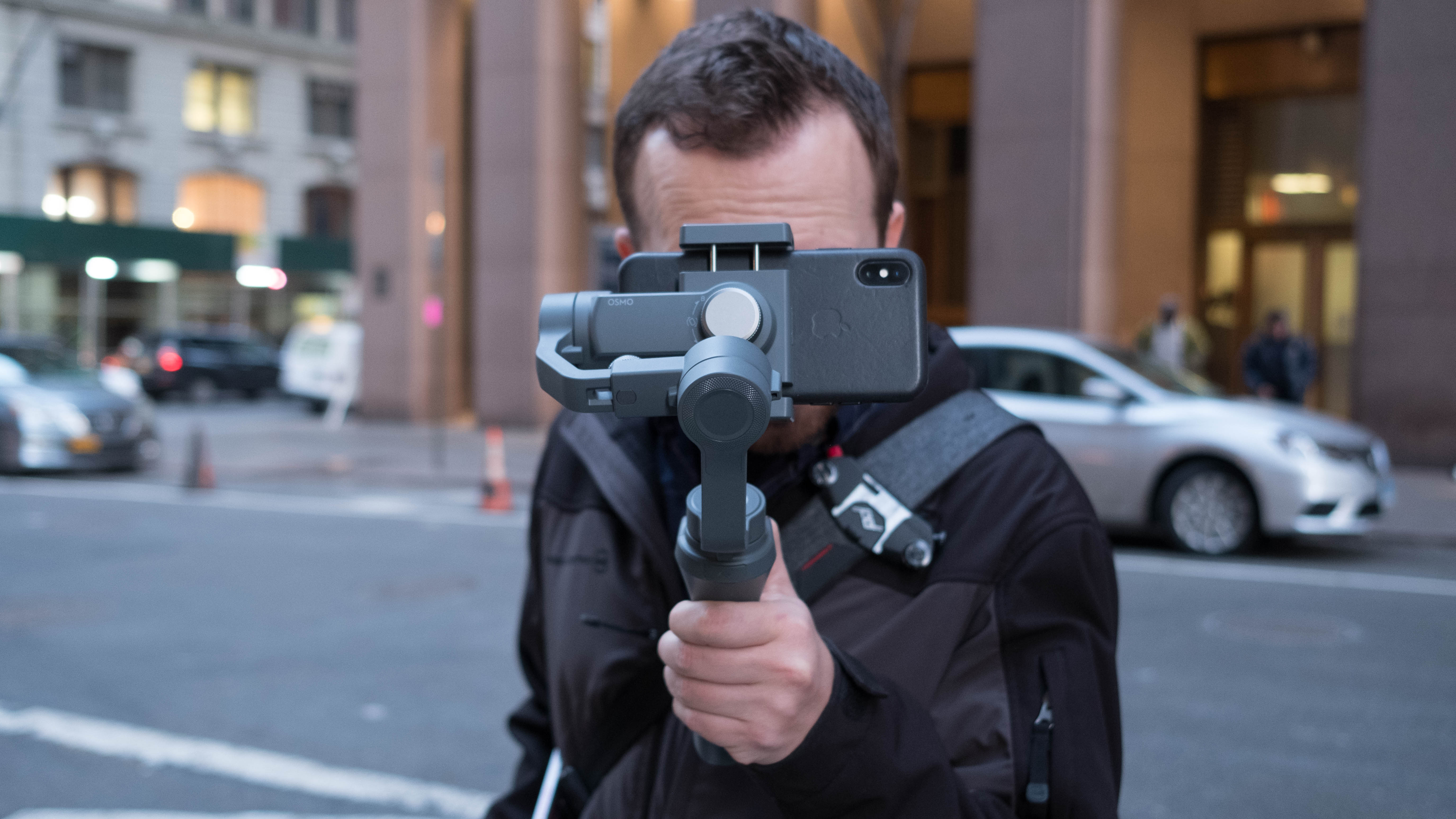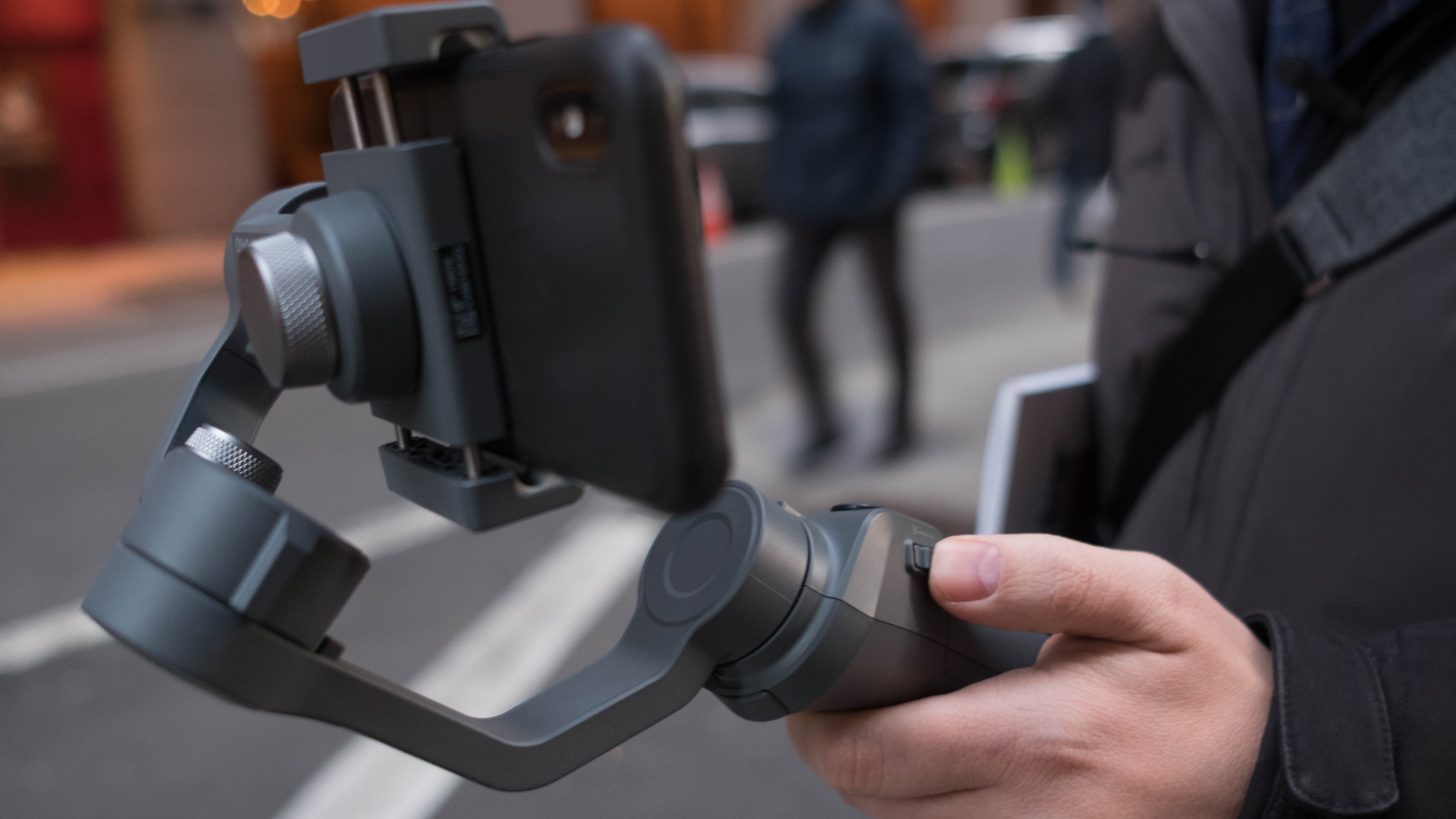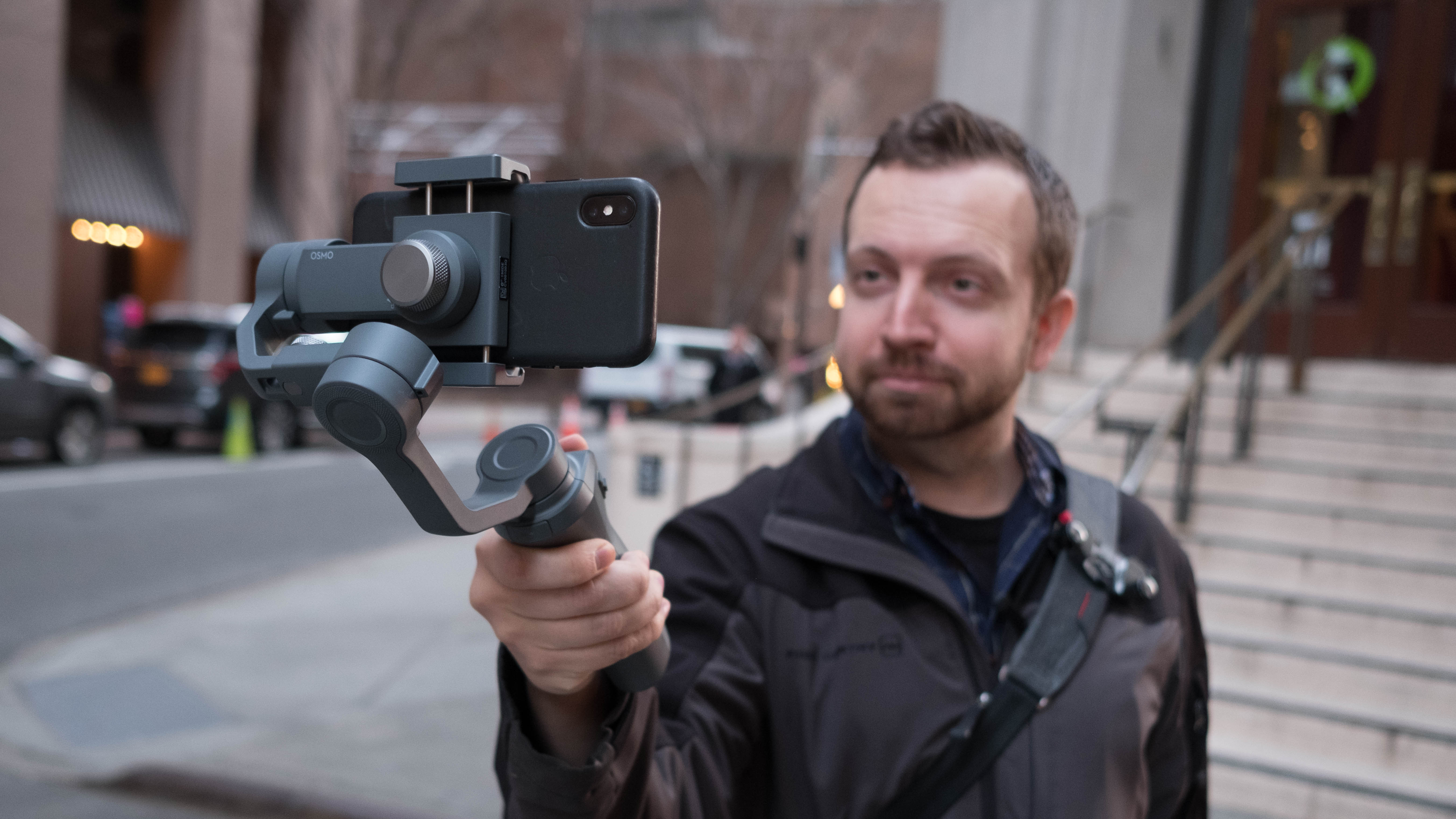TechRadar Verdict
The DJI Osmo Mobile 2 is lighter and cheaper than its predecessor, and despite that it's a way better smartphone camera stabilization gimbal than any other we've tested. It uses AI to track subjects and, with a new portrait mode, it’s even ready for the Instagram Stories and Snapchat generation.
Pros
- +
Lighter in every way, including price
- +
New portrait-orientation mode
- +
AI-powered subject tracking
Cons
- -
You can’t flip cameras mid-recording
- -
You have to physically switch orientation
- -
Micro USB port rather than USB-C
Why you can trust TechRadar
The DJI Osmo Mobile 2 is the popular drone company's most refined gimbal for smartphone cameras yet, so much so that it could take camera stabilizers, which up until now have been a niche accessory, mainstream.
It's the sequel to the original DJI Osmo Mobile, launching with simpler controls, smarter stabilization options and, most importantly, a cheaper price of $129 (about £95, AU$164).
The previous version launched for $299 (AU$399, about £220). At this new price, and thanks to the superior design and other refinements, the DJI Osmo Mobile 2 is worth the upgrade even if you have the old model.
Update: The DJI Osmo Mobile 2 is now on sale through the Apple Store, and will become more widely available in February. We'll update our review once we know the secondary release date.
Design
The Osmo Mobile 2 is a big upgrade in design. It's made of high-strength nylon, which is lighter than the plastic and magnesium base of the previous gimbal.

DJI has also modified the handle to be more ergonomic in your hand, making it more comfortable for long recording sessions.
On the bottom is a standard 1/4-inch thread for easily popping this thing on a camera tripod or other compatible accessory. DJI also sells a base, a tripod and an extension rod to give you more versatility, to name a few peripherals. You can basically accessorize your Osmo stabilizer almost as much as you can a GoPro Hero 6.
Sign up for breaking news, reviews, opinion, top tech deals, and more.

Use Snapchat? Not anymore? Okay, how about Instagram Stories? Well, then you're in luck. DJI has built the Osmo Mobile 2 with the 'Stories' generation in mind, as you can keep the phone locked to portrait-orientation mode through the gimbal holder. However, this has to be done physically, by turning a knob on the back (and you're supposed to take off your smartphone each time). Sadly, there's no on-the-fly button to change between the two orientation modes.

Everything else about the DJI Osmo Mobile 2 is simpler thanks to the fact that there are fewer needless controls – some buttons double-up on functions, like the power button and the mode-switching button. There's a dedicated record button and a thumb pad for smooth pans, and you'll find a new physical zoom switch on the side of the gimbal wand for zeroing in on tighter shots.
Perhaps the most welcome refinement to the Osmo Mobile 2’s design is its new spring-loaded clamp, which enables you to easily swap out phones of all sizes without having to fiddle with screws every time. You don’t have to worry about your phone shaking loose, either – this clamp will hold on for dear life. It worked with all of the current phones we tested with it: the iPhone X, iPhone 8, Google Pixel 2 and Samsung Galaxy Note 8.
Admittedly, we’d have liked some room on the gimbal to point a mic – the Osmo Mobile 2’s design doesn’t really allow for the placement of a cold-shoe mount, which would have been a welcome addition for budding filmmakers and vloggers seeking both video stabilization and clean audio when outdoors.
Video samples
Using the iPhone X we were able to achieve smoother-than-normal video while hurriedly walking outside and around the CES 2018 tech show in Las Vegas – not trying to do anything particularly flashy. With more practice and pacing, you can get even better results.
At the bottom, you'll find a video in which we practiced some speed walking through a hallway to see how well the gimbal held up – pretty well as it turns out, especially when you consider that we were almost running in this instance.
You may notice micro-shakes even in the best conditions, and that's dependent on your smartphone. Sometimes the gimbal and the phone's optical image stabilization (OIS) battle each other (the phone camera's on-board OIS detects movement and tries to compensate). Turning off OIS is one solution, but sadly that's not an option on some phones, like the iPhone.
User experience
You’ll need to install DJI's Go camera app (available for Android and iOS) and pair your device in order to use the zoom function, or adjust settings and select different modes, although once the device was paired the record button worked fine from within our iPhone’s native camera app. You just can't use the physical zoom slider. That's exclusive to the DJI Go app.

Switching on the device sees it immediately spring into action, automatically orienting and balancing the attached phone and allowing you to start recording steady footage right away.
The Osmo Mobile 2’s battery life has been extended to 15 hours – a massive three times better than its predecessor. You can’t hot-swap the battery out as you could with the original Osmo Mobile, but with 15 hours of life it's not a big deal, and there’s a new battery level indicator we got use out of – we were well warned.
The gimbal can also charge your phone through a standard USB port on the rear of the unit, and the device itself charges via a micro USB port. (Sorry USB-C fans – the new and by far superior reversible USB port isn't used in this generation of the gimbal).
Smooth moves
Predictably, there’s a learning curve to navigate before you can pull off sweet Steadicam-style shots with the DJI Osmo Mobile 2. Don’t expect to be Goodfellas-era Scorsese right out of the gate.
First, you’ll need to get acquainted with the basics. While you’ll be able to walk and shoot right away with little to no bouncing or bobble, getting the camera to point where you want it to isn’t quite so simple.

The conveniently-placed thumb pad lets you pan your camera up and down and from side to side. By default, the panning speed is quite slow (albeit very cinematic). You can adjust the speed of your pans via the DJI Go app’s gimbal settings. The app also lets you choose between Walk and Sport scene modes, adjusting the looseness of the gimbal accordingly.
Using the thumb pad takes a little getting used to, as you’ll find that the phone will sometimes swing away from the action you’re trying to capture, or remain facing in a single direction while you’re trying to pan around.
In situations like these, a single tap of the mode button will horizontally lock the camera, giving you greater control of where you want the camera to face. Double-tapping it will center your camera in case the gimbal wanders in its quest to slowly pan cinematically.
A triple-press of the mode button will switch you over to your phone’s front-facing camera. It makes narrating smoothly shot selfie videos easy, even if the experience isn’t as perfect as we’d like it to be. You can invert the thumb pad controls, but you can’t differentiate the inversion. Having the rear camera inverted and the front-facing camera normal would be ideal.
We’re also miffed that it’s impossible to flip back and forth between the two cameras while recording – something you can do on Facebook Live. This would make gimbal-based vlogging a lot easier, and reduce the amount of times you need to press record, stop, flip camera, and record again.
DJI’s new gimbal does boast artificial intelligence. In this case, it uses AI for tracking subjects with a feature called Active Track, which can be set to low, middle and high in the DJI Go app’s settings. DJI has also added Hyperlapse in addition to its returning motion lapse, panoramic and light trail modes.

After an hour or so we started to get pretty confident in our handling of the DJI Osmo Mobile 2. We were able to speed-walk at a fairly brisk pace while still keeping our shot fairly steady. It was only when we started to run that some camera bounce became unavoidable.
When the gimbal is powered up it’s also possible to tilt the handle in a number of directions while the phone itself stays completely in-line. However, there are limits to how far you can tilt – in our tests, we managed to get the handle to a 45-degree angle before the gimbal hit its boundary.

Final verdict
The DJI Osmo Mobile 2 is better than the original in every way – price, weight, smart stabilization controls, battery life and adapting to the Stories portrait-mode generation. It's so much of an improvement, and such a drop in price, that it's a rare case where we'd recommend upgrading even if you have the original model.
The Osmo Mobile 2 officially goes on sale in February, but there's an exclusive pre-sale started on January 23 through the Apple Store, the same day DJI announced the DJI Mavic Air drone.
- See our: DJI Mavic Air review

